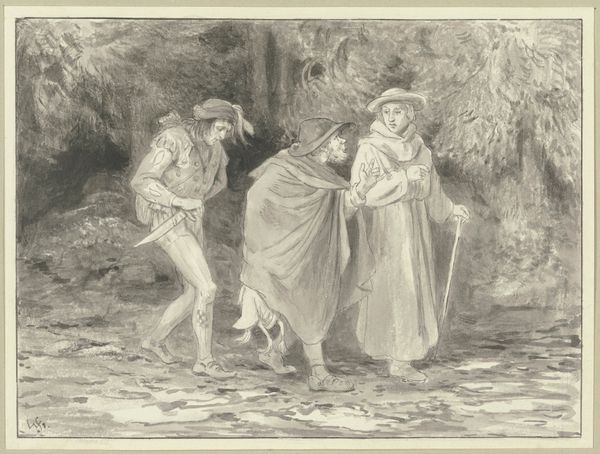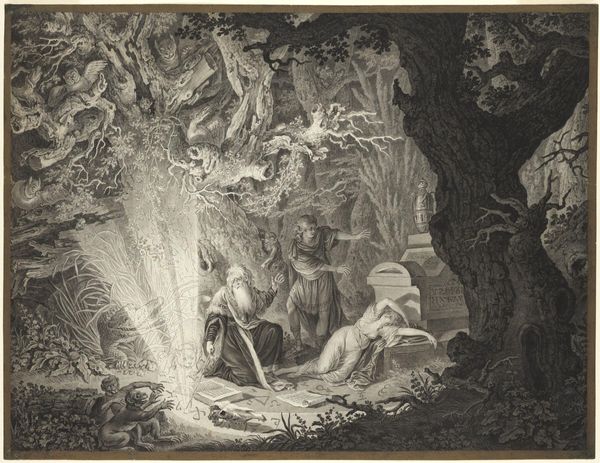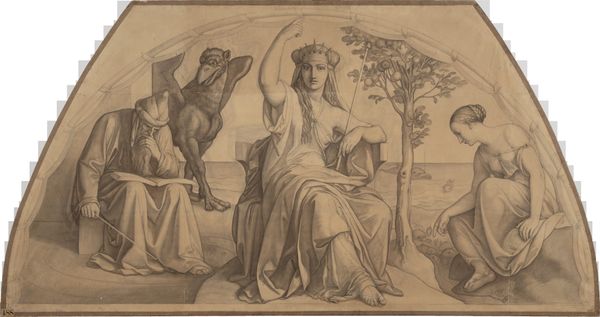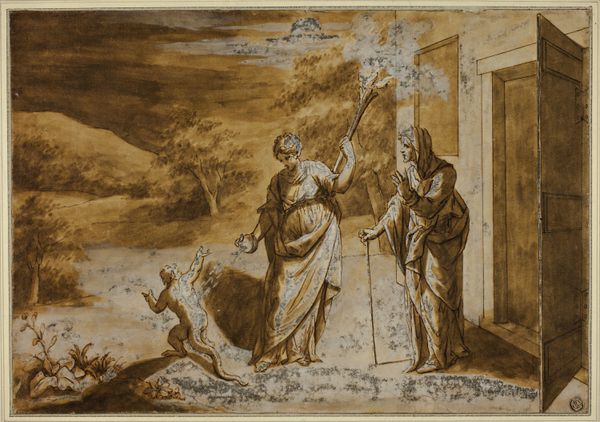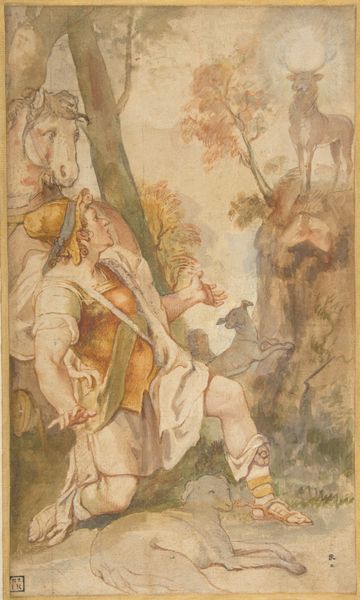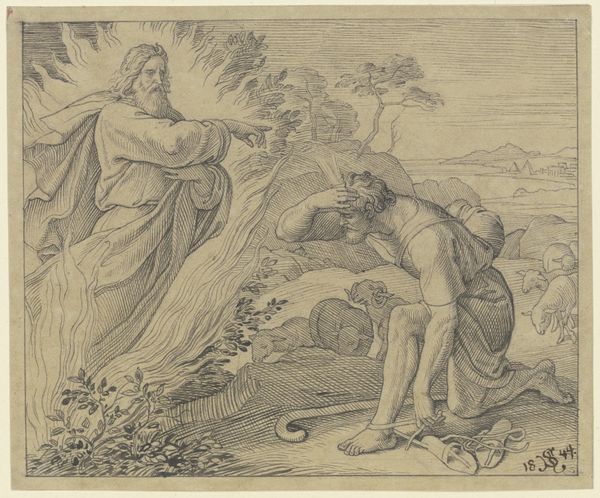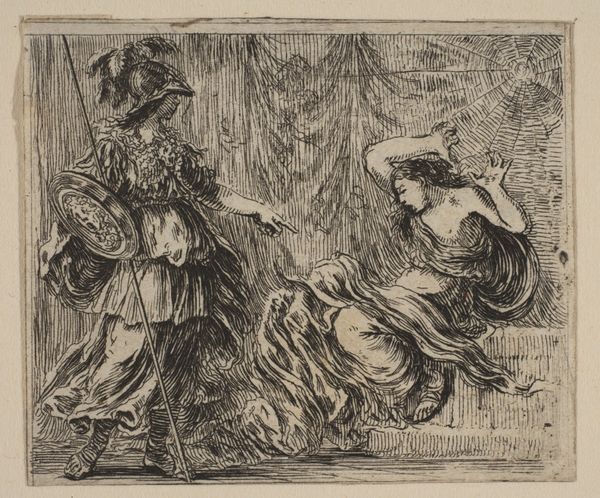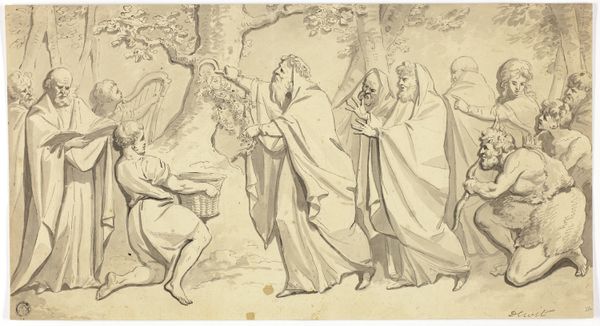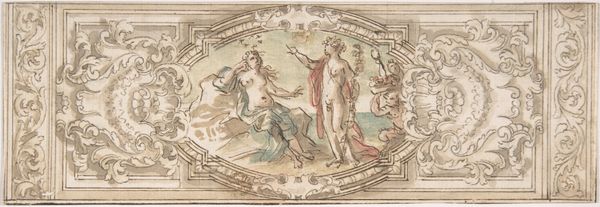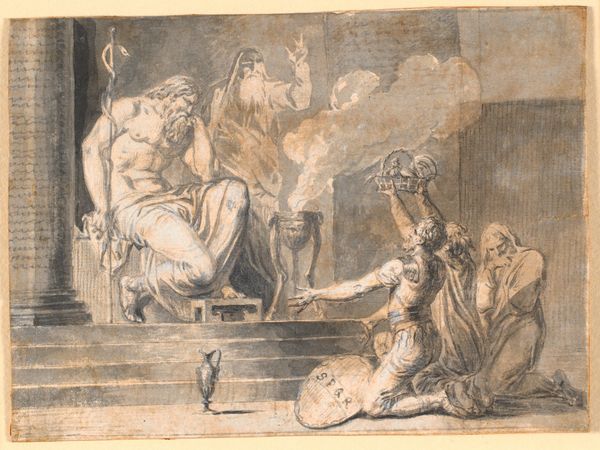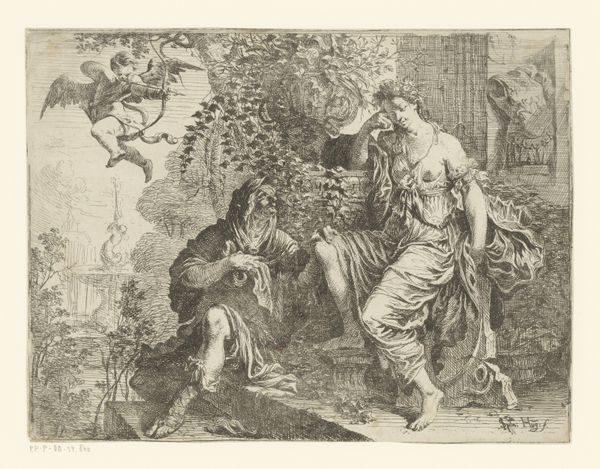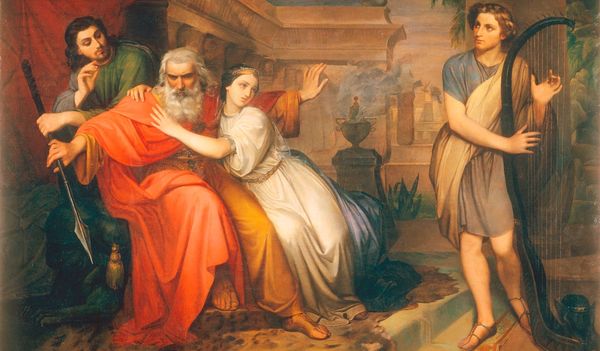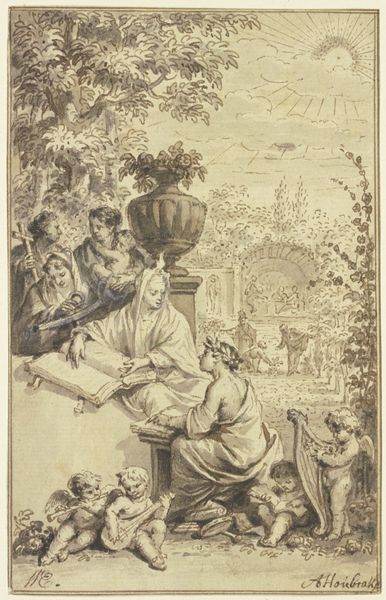
Das Herrscherpaar Theseus und Hippolyta, die Brautpaare Demetrius und Helena sowie Lysander und Hermia verfolgen das von den Handwerkern dargebotene Schauspiel c. 1883
0:00
0:00
Copyright: Public Domain
Editor: Here we have Leopold von Bode's "Das Herrscherpaar Theseus und Hippolyta, die Brautpaare Demetrius und Helena sowie Lysander und Hermia verfolgen das von den Handwerkern dargebotene Schauspiel" – quite a mouthful! It’s from around 1883, and it seems to be executed in watercolor, gouache, ink and chalk. What strikes me is the clear division of space; the composition is nearly split in two. How do you interpret that? Curator: Indeed, the diptychal arrangement of space is one of the most compelling aspects. Observe how Bode utilizes the proscenium not merely as a setting for the performance, but as a structuring device. What might this deliberate contrast in pictorial space suggest? Editor: Well, one side shows the royal audience, all composed and elegant. The other half depicts the chaotic players… The staging and acting seem so silly and clumsy! Curator: Precisely! The exaggerated gestures and comedic expressions contrast starkly with the refined comportment of the aristocratic viewers. Note the application of the pigment; see the looser, more gestural brushwork for the performers, and the tightly controlled details rendering the fabrics of the audience. Editor: That’s a clever contrast I missed. So, beyond simply depicting a play within a play, Bode is using visual cues to highlight social differences, the artificiality of performance, and, perhaps, a critique of artistic conventions? Curator: An insightful observation! Consider the inherent flatness of the image, versus the implied depth through receding planes. Does the interplay between surface and illusionistic space further enhance the work’s commentary on artifice? Editor: It does! The almost stage-like division adds a new dimension. Seeing it this way, it moves beyond just illustration, becoming a really sophisticated reflection on theater and class. Thanks! Curator: You're most welcome. It is through this attention to the materiality and composition of the image itself that we begin to unravel its multiple layers of meaning.
Comments
No comments
Be the first to comment and join the conversation on the ultimate creative platform.
